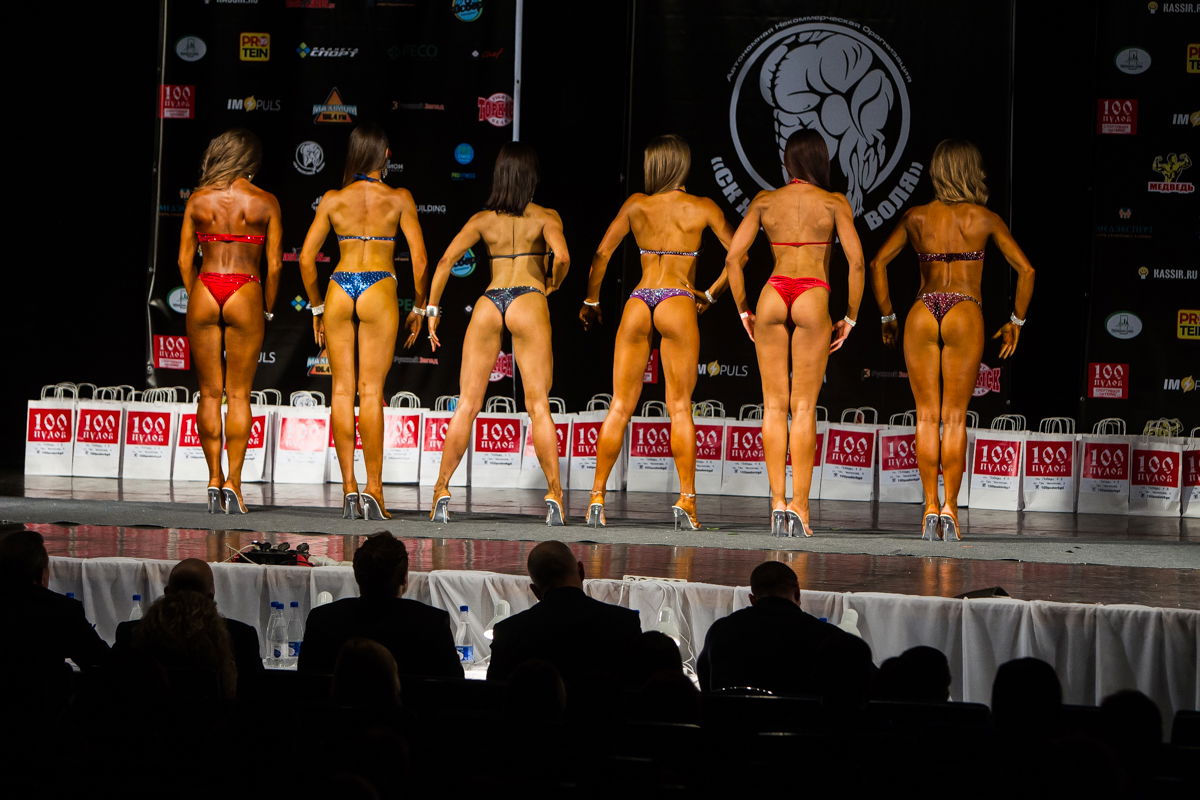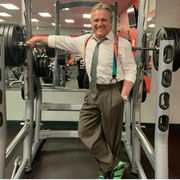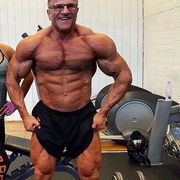

Bodybuilding was over a century old when Eugen Sandow started flexing his muscles, much to the public’s admiration. In the 1950s and 1960s, the sport took a new lease of popularity with bodybuilders competing in NABBA Universe events. The turning point in the growth dynamics of bodybuilding came when the Weider brothers started the Mr. Olympia contest in 1965.
Watch What’s Trending Now!
The 1970s is called the Golden Era of bodybuilding because the sport earned widespread popularity after Arnold Schwarzenegger’s Pumping Iron (1977) documentary became a sensation. However, women were still not associated with the sport. After 15 years of Mr. Olympia’s inception, the IFBB introduced the Ms. Olympia contest in 1980 to promote female bodybuilding athletes. But what was the reason for the delay in the advent of Ms. Olympia?
ADVERTISEMENT
The reason for the late onset of Ms. Olympia
Bodybuilding and strength sports have been associated with men for ages. The women of earlier eras, on the other hand, desired to preserve a supposedly feminine look. As a muscular body is often associated with masculinity, strength sports, and weight lifting were not opted by women till the 1970s.
The early physique competitions of women started in the 1960s that required women to display their bodies. These contests were not focused purely on the bodybuilding aesthetics of competitors but ignited the aspirations of many more women bodybuilders. However, what drove women towards strength training?
Top Stories
Bullied for Her Staggering Height, 6ft Female Football Athlete Turned Bodybuilder Set to Feature in Gladiators’ Reboot

“He Made Bodybuilding Look Sexy”: Dorian Yates and Tom Platz Remember the Legend Who Transformed Bodybuilding Forever

“OMG No Way”: 36-Year-Old IFBB Pro’s Demise Deeply Saddens Bodybuilding World

Retired for Almost Four Decades Now, Bodybuilding Legend Tom Platz Gives His Take on Modern Bodybuilding

“Don’t Usually Argue With Skeptics”: Shredded at 63, Bodybuilding Veteran Once Uncovered the Truth Behind Keeping in Shape Over the Years

ADVERTISEMENT
The change in perspective in the 1970s
The feminist uprising in the late 1970s coincided with women resonating with strength. Lisa Lyon, who is popular among the bodybuilding community for her immense strength, started lifting weights during this time. Lyon was so strong that she carried the 7x Mr. Olympia champion, Arnold Schwarzenegger, on her shoulders. Lyon strived to popularize bodybuilding among females by posing for magazine covers.
ADVERTISEMENT

“In the ’50s you had women like Marilyn Monroe who were strictly s*x objects. In the ’60s you had Twiggy, who started the undernourished, androgynous style. In the ’70s there was Farrah [Fawcett]. Now, in the ’80s, health is a reality. Women are building up their bodies without sacrificing beauty or femininity,” Lyon underlined in an interview with Playboy magazine. So, the changed perspective laid the foundation for more female bodybuilding contests.
ADVERTISEMENT
The genesis of women’s bodybuilding competitions in the late 1970s
Until the early 1970s, men dominated the arena of bodybuilding. Schwarzenegger was reigning the Mr. Olympia stage till 1975, and the sport was gaining prominence among the masses. But on the other side, female bodybuilding was also gaining acceptance. Henry McGhee strived to give female bodybuilding a competitive twist, as he believed that women needed equal opportunity to flex their muscular bodies after weight training like men.
Watch This Story | “Bible of Bodybuilding”–7x Mr. Olympia Arnold Schwarzenegger Once Explained the Book that Got Him Into Bodybuilding
ADVERTISEMENT
In 1977, McGhee organized the first female bodybuilding competition, the Ohio Regional Women’s Physique Championship, in Canton, Ohio. Gina LaSpina won the event that was judged purely based on bodybuilding rules. He later organized other events like the National Women’s Physique Championship. Building on this foundation, later, female bodybuilding entered its golden phase.
The inception of Ms. Olympia in 1980
The year 1980 was crucial in the bodybuilding sport history. While men’s bodybuilding witnessed Arnold Schwarzenegger return to the Mr. Olympia stage after retiring from the competitive arena in 1975, women’s bodybuilding was elated with the inception of Ms Olympia, promoted by George Snyder.
ADVERTISEMENT
The contestants for Ms. Olympia were chosen by Snyder based on the pictures and resumes submitted by interested candidates. The first ever Ms.Olympia competition took place in Philadelphia, PA, and Rachel McLish became the first Ms. Olympia.
But in 1982, Synder had lost his rights to organize the event, and a new set of rules came into play for the selection process. In 1982, the competitors for Ms. Olympia had to qualify for the lesser contests to take part in the event. This boosted the onset of more muscular women bodybuilders onto the Ms. Olympia stage.
ADVERTISEMENT
The changes that the Ms. Olympia stage saw in the 1990s and 2000s
With each passing year, more and more muscle was added to the Ms. Olympia stage. Corinna Everson reigned the stage from 1984 to 1989, stunning the bodybuilding enthusiasts with her shredded physique. Lenda Murray took the muscular quotient to a greater intensity in the early 1990s. Bev Francis and Murray’s fierce onstage battle had ignited their offstage training rituals. To tone down their ever-increasing sizes, IFBB introduced femininity rules in 1992 that restricted athletes from becoming too big.
In 2000, IFBB introduced multiple rules to regulate Ms. Olympia. Unlike the earlier competitions, Ms. Olympia would now be a part of the Olympia Weekend, which will be organized a day ahead of the Men’s event. That year, the chairman of the Professional Judges Committee, Jim Manion wrote a letter to the competitors that mentioned, “symmetry, presentation, separations, and muscularity BUT NOT TO THE EXTREME!”
ADVERTISEMENT
Heavy and lightweight classes were introduced in the Ms. Olympia. But in 2005, weight class was discarded, and IFBB came up with a “20 percent rule.” According to this, female bodybuilders competing at the show had to reduce their musculature by 20%. Ms. Olympia, in the next decade, witnessed Iris Kyle as the leading champion till 2014. She won 10 Ms. Olympia titles, becoming the highest Olympia title holder in any division. But Ms. Olympia stopped in 2014, with the IFBB giving numerous reasons for it.
Ms. Olympia’s 2014 discontinuation and revival in 2020?
In 2014, the Ms. Olympia competition was discontinued, and the management cited reasons like a lack of fans’ interest, decreasing sales of tickets, and even less athletic participation. However, the elite female bodybuilding event made a comeback in 2020.
Despite the struggles of the pandemic, Ms. Olympia returned to the Olympia weekend in 2020. After a break of five years, the athletes were more than excited to compete in the show, and Andrea Shaw lifted the trophy both in 2020 and 2021.
In 2023, the Olympia weekend is set to kick start on November 2nd, and Ms. Olympia enthusiasts will witness the bodybuilding athletes in bikinis flexing their muscles. Who are you rooting for this time? Let us know in the comments below.
ADVERTISEMENT
ADVERTISEMENT
ADVERTISEMENT

